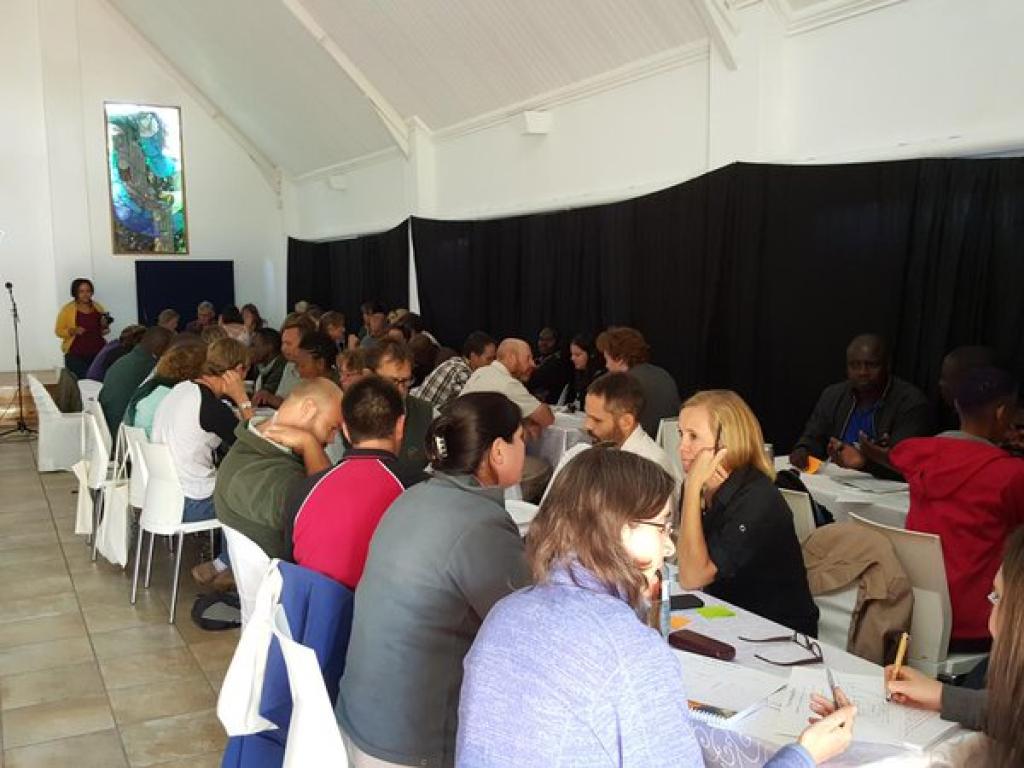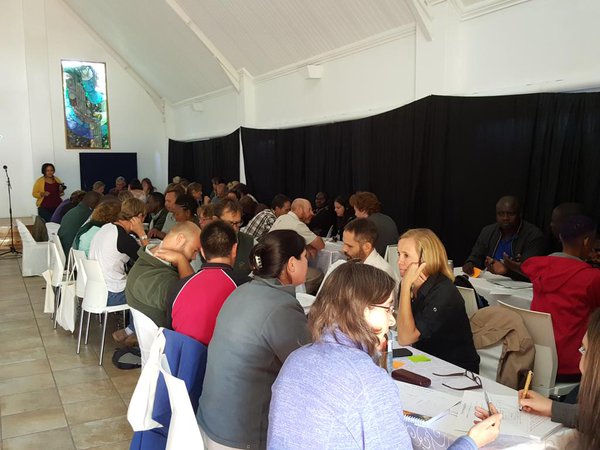Practising the art of conservation


Practising to organise thoughts using 'The Message Box' framework @SCCP2015 â
Recently I had the opportunity to represent the Plant Conservation Unit at the Symposium of Contemporary Conservation Practice Conference (SCCP) organised by Ezemvelo KZN Wildlife in Howick, KZN, from 2nd to 6th November. The symposium focused on current hot topics in conservation practices. As such, my talk focused on the analysis of historical change (mostly declines) in cycad numbers using repeat photography and current population structure. This forms part of my postdoctoral research.
I was very impressed by the variety of topics presented at the conference and by the number of stakeholders present from research, conservation management and government bodies. There was recognition that conservation challenges are often complex and tied to socio-economic, political, environmental and global change drivers. However, scientific studies were often misdirected/irrelevant, slow to achieve results and scientists were often poor at communicating their findings, especially at a level that would be useful to managers and other stakeholders.
The current issue of captive-bred lion hunting was hotly debated between polarized ‘for’ and ‘against’ camps. On the one hand pragmatists argued that revenue generated from lion kills considerably supplemented conservation coffers and made protection of wild lions and other endangered species possible. On the other hand principle-ists argued that killing simply for sport commodified an intrinsically valuable species, thereby devaluing and undermined the conservation effort. Similar heated discussions surrounded the rhino-poaching issue and whether stockpiles of rhino horn should be sold or burnt. Illegal trade in threaten species, as well as traditional and cultural rights to exploit natural resources were other interesting discussion topics.
Interestingly, the power of media, particularly social media, was highlighted for its effective use in conservation efforts. As a result the conference events were circulated in social media under the twitter tagline #SCCP2015.
Several presentations evaluated land-use change and ecosystem impact in the landscapes of KwaZulu-Natal. Historical data was presented, as well as several model predictions for the future. The findings highlighted how biodiversity has declined over time and will continue to do so into the future. There was also an extensive discussion on marine and estuarine protected areas and the implication of continued development and harvesting pressure on future subsistence and commercial utilisation. One of the solutions identified was upscaling farming of marine organisms, but with associated costs such as nutrient-rich effluent releases.
I was also very impressed to find many students whom I demonstrated to in their undergraduate studies having started to participate in the conservation sector by working for municipalities or conservation bodies such as Ezemvelo KZN Wildlife. Their oral and poster presentations were of a high standard.
Interactive Communication Workshop
The conference also provided a workshop on successful communication to organize thoughts using The Message Box framework. Many scientific arguments are long-winded and complicated and consequently aren’t understood by lay-people, land managers and decision makers. Sometimes this results in important scientific findings not being incorporated into planning and decision making. One suggestion was that scientists should learn how to communicate their key findings to anyone in one minute (Ms Nancy Baron). The workshop also pointed out that while many conservation issues might be very depressing, it was important to inject an element of hope and humor in your research. A hopeless situation is disempowering and unlikely to inspire engagement or action. Conversely, a positive outlook on a particular conservation challenge is more likely to inspire enthusiasm for working towards a solution. In short, one’s message needs to be pitched at the right level and ‘stick’ in the consciousness of the listener. For further information on the Message Box approach see: http://gap2.eu/methodological-toolbox/the-message-box/
Article by Desale Okubamichael
